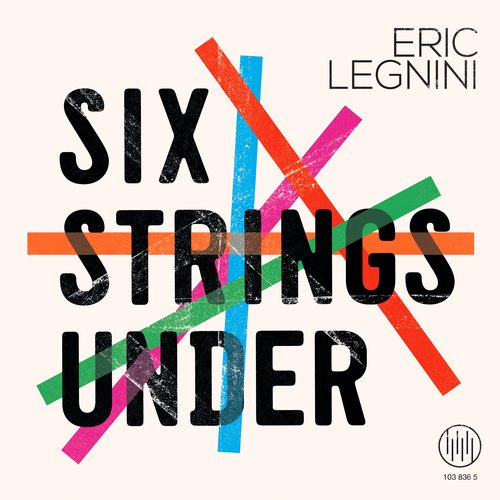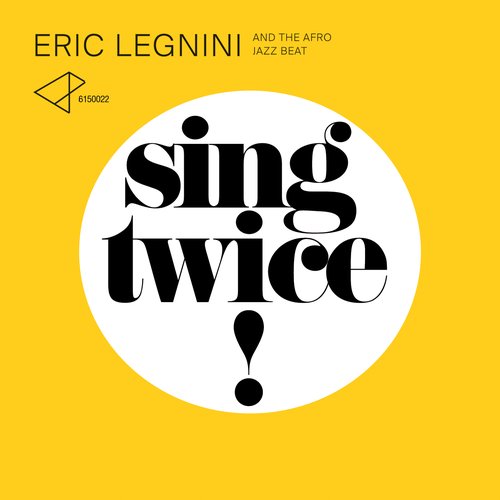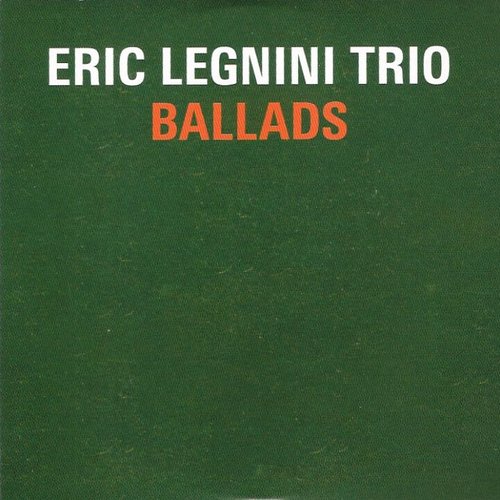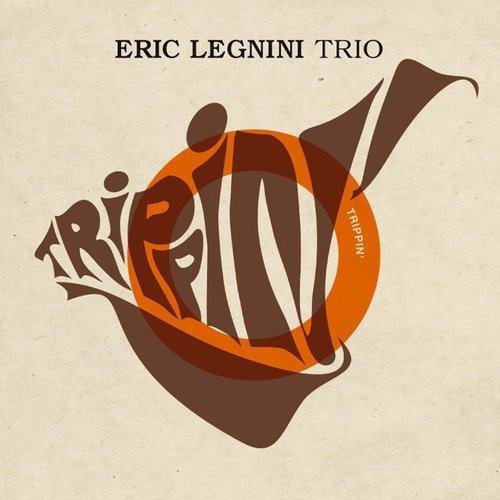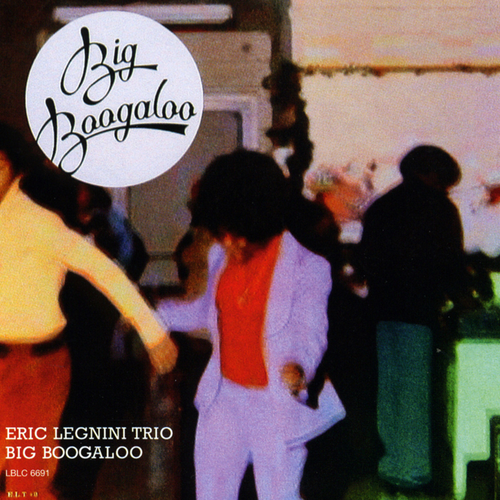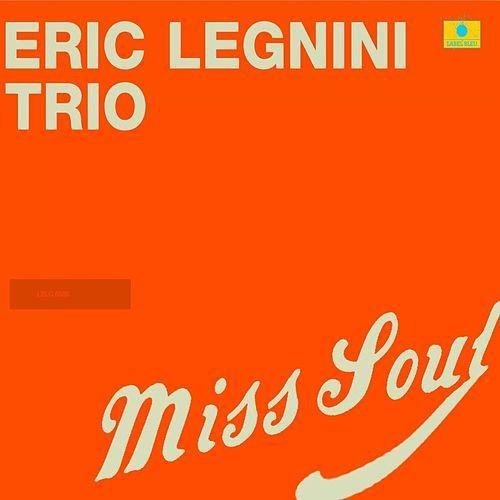| 1. | In a Sentimental Mood |
| 2. | Don't Let Me Be Lonely Tonight |
| 3. | Nightfall |
| 4. | I Fall In Love |
| 5. | Prelude to a Kiss |
| 6. | Willow Weep for Me |
| 7. | Trastevere |
| 8. | Folk Song #1 |
| 9. | Portrait In Black and White ‘zingaro’ |
| 10. | Smoke Gets In Your Eyes |
| 11. | Amarone |
| 12. | It Could Happen to You |
| 13. | I Can't Get Started |
| 14. | Darn That Dream |
| 15. | Folk Song #2 |
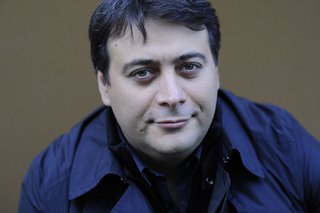


The art of ballads
“Ballads really are the hardest to play. Something more uptempo can hide minor flaws and imperfections, but a ballad will never conceal a lack of ideas. Ballads don’t lie, you’re fully exposed. The very flow means you have to be precise and to the point.” This is the challenge Eric Legnini takes up with the Steinway and wins hands down (but with a light touch). Recorded a year before “The Vox” and released a year later, “Ballads” is both a stylistic composition and an exercise in introspection from a man who recently turned forty. It was an elegant breathing space in a career that had been steadily accelerating since the mid-2000s. And it was also an opportunity for the pianist to delve once more into the fountain of youth that is the Great Masters’ repertoire, with “the fresh mindset needed to regenerate the usual approach to standards”. With “Ballads”, he delivers stunning new takes on that raw material.
The art of standards
“Standards are the building blocks of the jazz language. Finding your approach to this age-old grammar is how you learn jazz”. Eric Legnini’s education began in Belgium, where he played in a trio from 1988 to 1994, before moving to Paris and learning more, always including in his sets those good old tunes. From that “wealth of knowledge”, he has picked out his benchmark versions and used them to carve out his own stories, rather than just mirroring them. Every single one of them is like a footnote referring back to his biography. Take for example the emblematic portrait in black and white that is “Zingaro” by Jobim, the boss of bossa, a theme that has haunted Eric ever since he first came across it at the Liège Music Academy, at a concert with Michel Graillier and Chet Baker. His Belgian years were marked by “I Fall In Love Too Easily”, which he played alongside Jacques Pelzer and “I Can’t Get Started”, which he made his own with Toots Thielemans. “Having role models is not something to be ashamed of. In fact, I’m always glad to be told I sound like so-and-so because I know I haven’t mimicked them, just looked to them for inspiration. That just transpires from time to time”. Phineas Newborn and Oscar Peterson, Hank Jones and Junior Mance: these are the fountainheads from which Eric Legnini has been drinking for years now. He goes back to them with evident pleasure and the same thirst for knowledge that children feel at the feet of their elders. Starting with the Duke, the founding father of jazz, in whose footsteps he walks as “Ballads” opens: “In A Sentimental Mood” sets the tone of the session, spot-on, just right and pathos-free. “The version by Ellington and Coltrane is stil, to me, absolutely matchless.” His take on the song is just as vibrant and devoid of superfluous effects.
The art of repertoire
Light years away from experts in the field of dotted demisemiquavers and musicians who play so hard their wrists hurt, Eric Legnini steers clear of taking the easy, gesticulating way out and avoids the padding that is so sweet on the ears of novices but conceals a vast expanse of emptiness. No double-bass solo, no rapid-fire drum roll, the pianist simply makes time stand still, reins in the tempo and even dares to give pride of place to silence. These fifteen themes, most of them under 3-minutes long, are like fifteen concentrates displaying more wisdom than feats of virtuosity. “The short format is a perfect fit for this repertoire. You can say just as much in three minutes as you can in eight. Your individual approach to the melody makes up the basic colour shaping your improvisational line.” Alone at the piano, he sketches out two folk songs and retraces his own songwriting by revisiting three of his classics: the joyful “Trastevere”, the nostalgic “Amarone” and “Nightfall”, a theme that acts as a kind of stylistic signature. His solo performance of “Prelude to a Kiss” – one of his favourite songs – is imbued with the same restraint. His very personal adaptation – although here accompanied by two other musicians – of James Taylor’s “Don’t Let Me Be Lonely Tonight” underlines his love for music of the soul. Worthy of special mention amidst this profusion of essential gems, “Willow Weep For Me”, delivered with Ray Bryant’s version in mind, sums up the whole piano-jazz gospel tradition, and the nod to Bill Evans’ version of “Darn That Dream”. “There are two undisputed masters in the ‘white’ school of trio: Paul Bley, who has a rather untamed approach to playing, and Bill Evans, modern at all times.” Not to mention Keith Jarrett’s standards trio, a matrix-like ensemble for Eric Legnini, whom he subtly celebrates with “Smoke Gets In Your Eyes”…
The art of the trio
Clearly, to Eric Legnini, versatility rhymes with inquisitiveness and originality is rooted in historicity. From the elegant Hank Jones to the boisterous Ahmad Jamal, not forgetting Morris Nanton’s “Soul Fingers” nor Junior Mance’s “Touch”, the jazz trio formula remains his favourite, and he explores it with the gusto of an informed follower. “Avoiding repetition is what drives creativity, but that doesn’t mean you shouldn’t follow the lead of your forbearers”, he said at the release of “The Vox”, a record built around his interaction with the two-man rhythm section. “Ballads” documents the birth of the trio and Eric’s first studio session (courtesy of Gérard de Haro!) with his newfound kindred spirit, double-bass player Thomas Bramerie, the perfect counterpart to drummer Franck Agulhon. “In a trio, the piano sets the general mood in terms of harmony and colour. The drums are the driving force that rules out monotony by highlighting the contours, the seams of each piece. The double bass bridges the gap; it is the binding agent, the essential link”, as is apparent throughout the record. This triangular relationship results in a unique sound, revealing – between the lines – the band’s heart and soul. “When playing as a trio, I think it’s important to choose songs that have an emotional charge so as to express something really meaningful. My many various influences naturally seep through, like a personal synthesis of my experience of the piano. Revisiting this repertoire was like getting back to basics before moving onto new and daring mixtures.” A return to the sensuality of ballads before embarking on new adventures…
